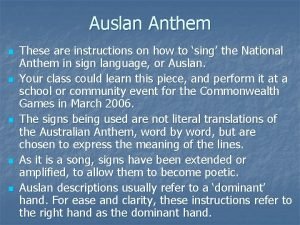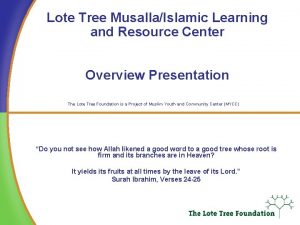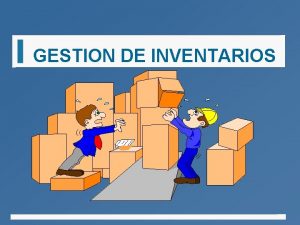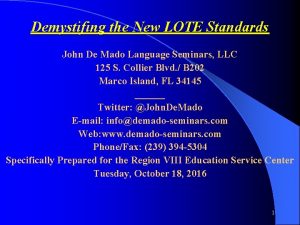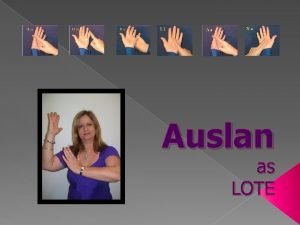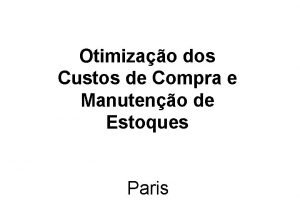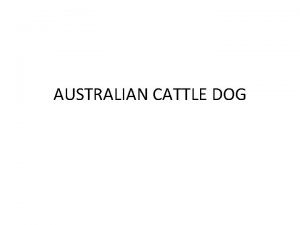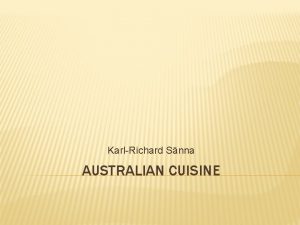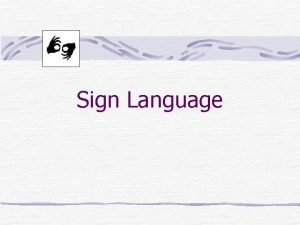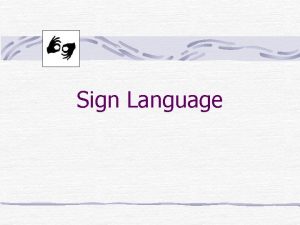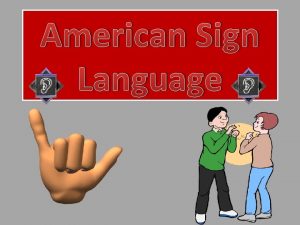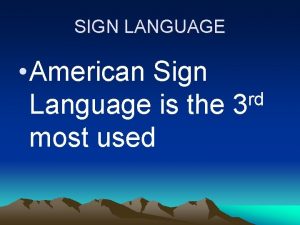Auslan as LOTE Auslan Australian Sign Language Hi







- Slides: 7

Auslan as LOTE

Auslan Australian Sign Language Hi, my name is Lorette Juers. I am Deaf. I am the Auslan Lote Teacher. I teach all children from Prep to grade 6.

All the students in the school are working at Level 1 of Auslan as they are in their first year of learning Auslan. This year we have begun to focus on the 2 major areas of LOTE: (i) Communicating in Auslan (ii) Intercultural Knowledge and Language Awareness.

Students have been exposed to simple language patterns in Auslan. They are taught in Auslan without interpreting. Students have been exposed to greetings, introductions through fingerspelling and simple Auslan structures. They are interpreting gesture and facial expression and use some of the nonverbal behaviour that is part of Auslan.

Students are able to demonstrate single signs and simple signed sequences, recognise signs and obtain meaning to follow instructions and participate in games and activities. They are demonstrating an awareness of some of the differences between Auslan and spoken languages.

The students will practice signing and reading back signs connected to the fingerspell alphabet, numbers, greetings, getting attention of a Deaf person. For example tapping the floor, waving, tapping softly on the arm and tips of communicating with a Deaf person, such as eye contact and making sure you are not standing with the light behind you.

Topics have included colours, food, animals, money, transport, feelings, time, school, weather and question words (who, what, where, why, what, how old, how many? ). Practice has also been given in using classifiers or description and location for following directions.
